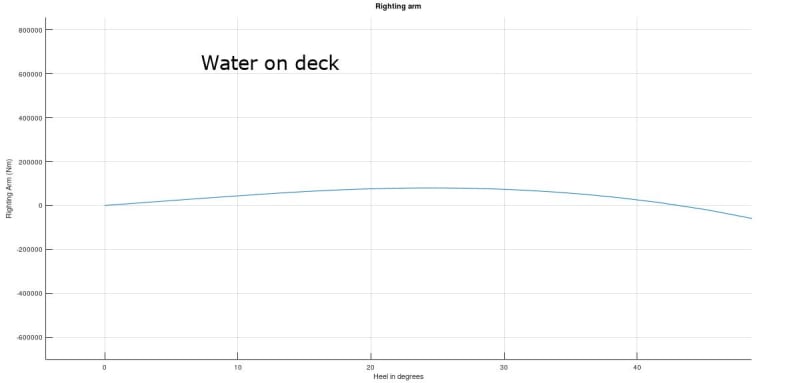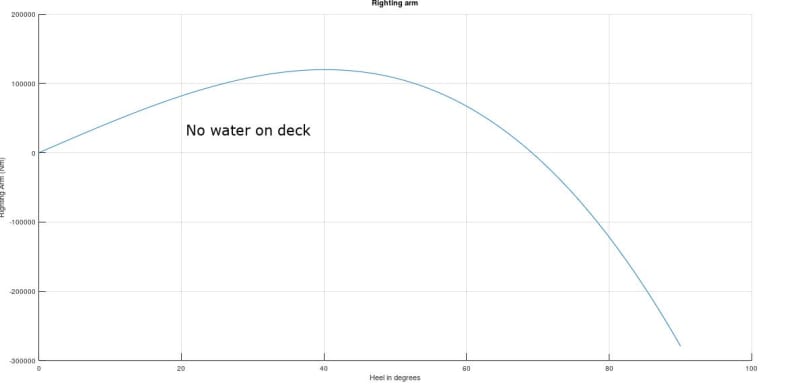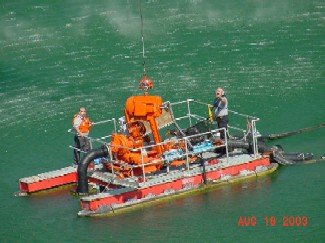Mohanlal0488
Structural
- Jun 26, 2020
- 103
Hi Guys
There is no forum specifically for maritime engineering hence the post here.
I have been dealing with the design of pontoons for a number of years now, the pontoons are used for industrial and mining operations, and I have been adhering to our local rules and regulations.
Over the years I have developed a number programs to assess the stability of pontoons, my final method that I have developed uses a similar approach as finite element packages.
The pontoon floats are about 1 meter high and are generally designed to have a submergence of 60%. When performing stability analysis there is always a point in time whereby one side of the deck will be submerged in the water. This is taken into account in my finite element formulations and it ultimately has an effect on the righting arm. When considering the water on the deck, the righting arm becomes negative at a smaller heel angle, while without the water on the deck this occurs at a larger heel angle (See the attached images). Note that the results from the program have been checked by means of FEA software so they are correct.
So my question is when performing stability analysis using the traditional methods is the effect of water on the deck taken into account or is this neglected?


There is no forum specifically for maritime engineering hence the post here.
I have been dealing with the design of pontoons for a number of years now, the pontoons are used for industrial and mining operations, and I have been adhering to our local rules and regulations.
Over the years I have developed a number programs to assess the stability of pontoons, my final method that I have developed uses a similar approach as finite element packages.
The pontoon floats are about 1 meter high and are generally designed to have a submergence of 60%. When performing stability analysis there is always a point in time whereby one side of the deck will be submerged in the water. This is taken into account in my finite element formulations and it ultimately has an effect on the righting arm. When considering the water on the deck, the righting arm becomes negative at a smaller heel angle, while without the water on the deck this occurs at a larger heel angle (See the attached images). Note that the results from the program have been checked by means of FEA software so they are correct.
So my question is when performing stability analysis using the traditional methods is the effect of water on the deck taken into account or is this neglected?



